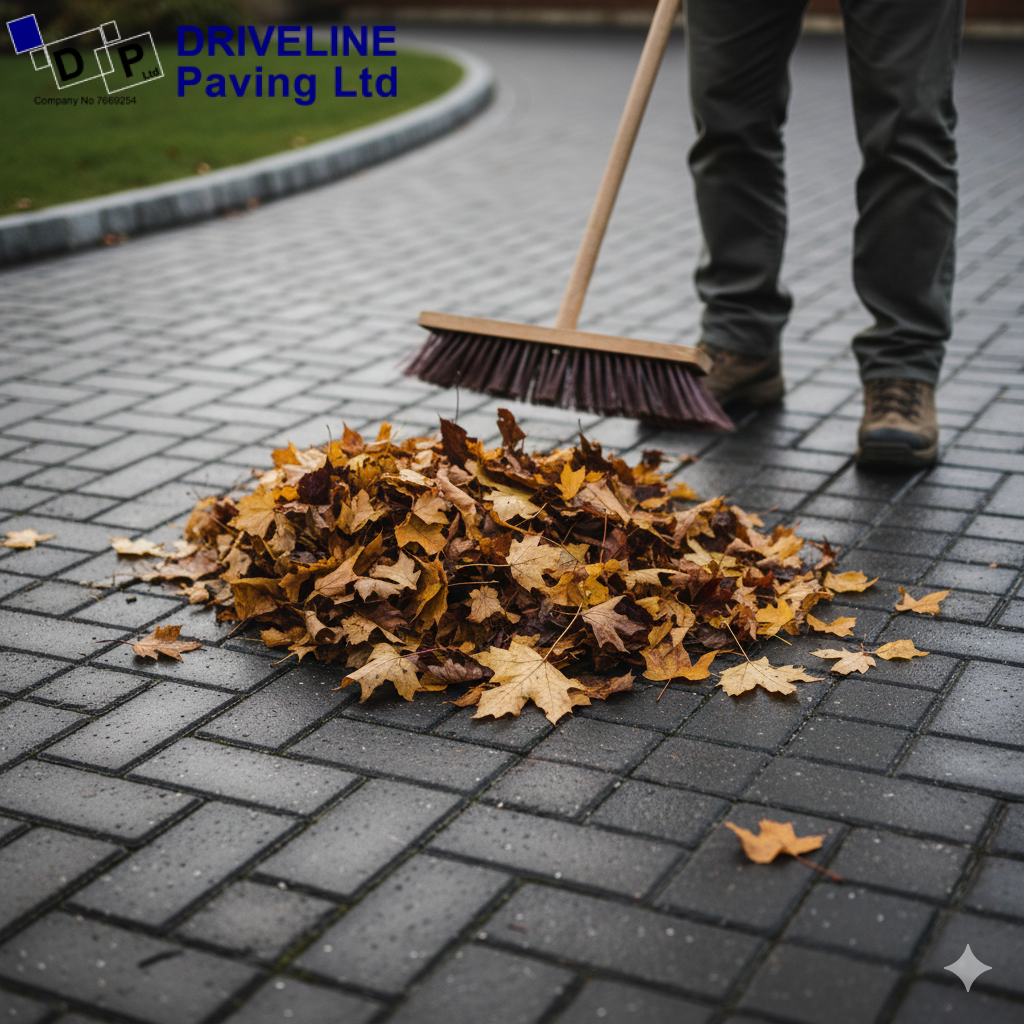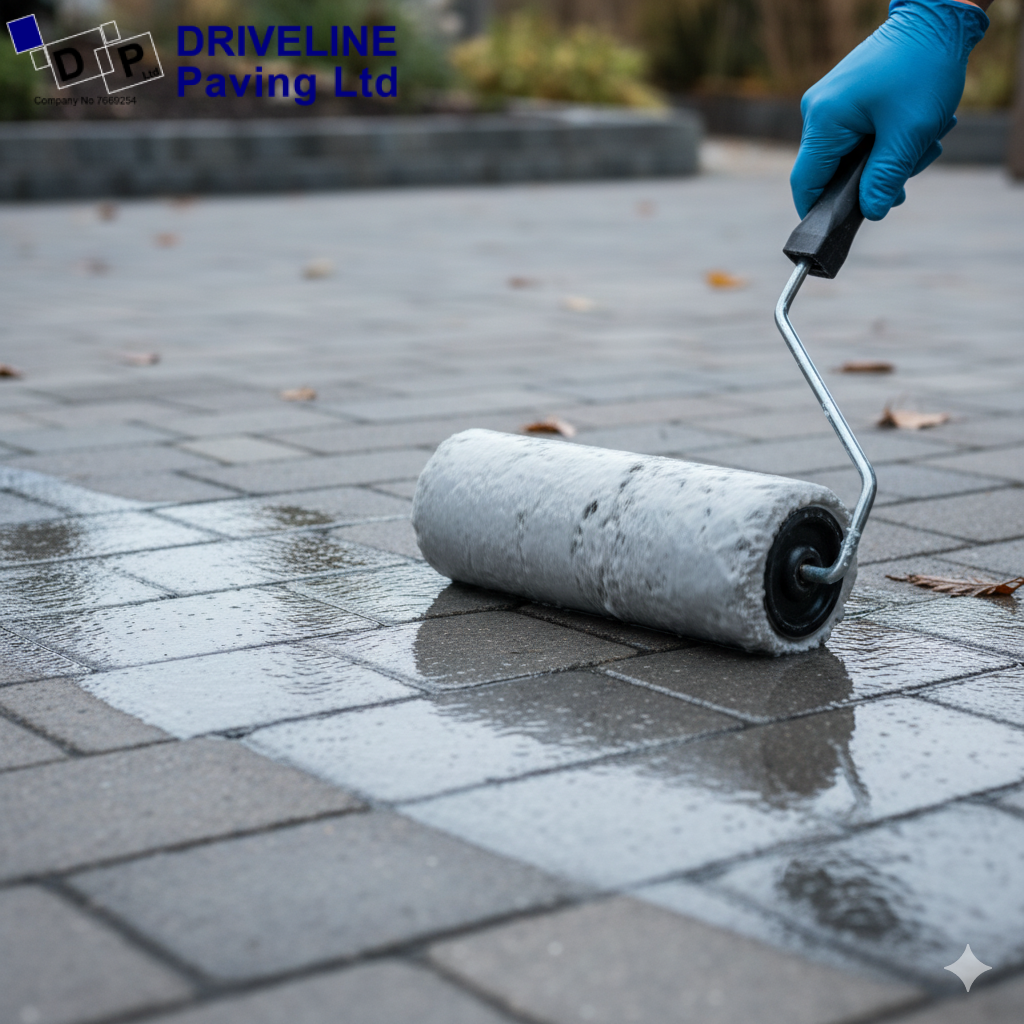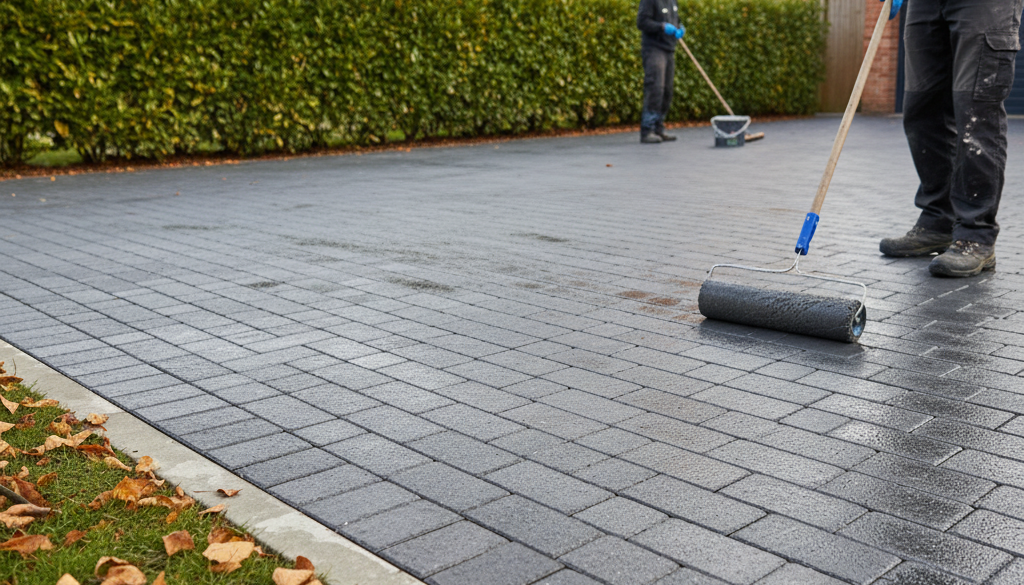Autumn Driveway Care: Stop Leaves, Moss and Frost Damage
As temperatures drop and rain becomes frequent, driveways face their toughest conditions of the year. Autumn brings more than falling leaves—it introduces moisture, shade, and debris that can quickly damage paving if left unchecked. Moss takes hold in damp joints, stains build up from decaying leaves, and frost can cause cracks to form in poorly maintained surfaces.
Regular seasonal maintenance keeps your driveway looking its best and prevents costly repairs later. Whether your surface is resin, block paving, or tarmac, a few simple steps can help protect it from the combined effects of leaves, moss, and frost.
Why Autumn Maintenance Matters
Driveways endure constant exposure to the elements, and the transition from warm to cold weather places them under stress. Wet leaves trap moisture on the surface, leading to discolouration and slippery conditions. Moss and algae thrive in shaded or damp areas, making the surface unsafe to walk or drive on. When temperatures drop, any retained moisture can freeze and expand, widening small cracks and loosening joints.
Addressing these problems early in autumn ensures your driveway stays clean, functional, and ready to handle winter’s extremes. A small amount of attention now can prevent far more significant repair work in spring.
Clearing Leaves the Right Way
Removing fallen leaves is one of the simplest yet most effective maintenance tasks. However, timing and technique make a difference. Leaving piles of wet leaves for days can stain resin or block paving, and their decomposition encourages moss growth.
Use a stiff broom or leaf blower regularly, focusing on corners and edges where leaves tend to gather. For block-paved areas, take extra care to clear gaps between joints—trapped organic matter here can cause long-term discolouration. Composting or binning the debris immediately helps prevent spores from re-spreading. Consistent clearing keeps surfaces safe and prevents the gradual build-up of organic material that leads to green patches later in the season.

Preventing Moss and Algae Growth
Moss and algae flourish in shaded, damp conditions—particularly on driveways that don’t receive full sunlight. Their roots can penetrate tiny pores in the surface, eventually weakening sealants or causing paving to lift.
A mild biocidal cleaner or moss-control treatment can stop growth without harming surrounding plants. Always apply on a dry day and allow it to soak for several hours before rinsing. In high-traffic areas, consider using a pressure washer once or twice a year to remove any residue.
To reduce recurrence, improve drainage and airflow around the driveway. Trim overhanging branches, clear gutters, and sweep regularly to keep moisture from sitting on the surface. A clean, well-ventilated area is the best defence against regrowth.
Managing Drainage and Surface Water
Autumn rain tests the effectiveness of your driveway’s drainage. Blocked channels or uneven surfaces allow puddles to form, which later freeze and create frost-heave damage.
Inspect gullies, grates, and soakaways for leaves and debris, clearing them out before the first heavy downpour. If your driveway frequently holds water, consider professional adjustments such as adding trench drains or replacing old joints with permeable materials. Proper drainage is crucial for preventing erosion beneath the surface, ensuring that water flows away instead of seeping into cracks and joints.
These improvements may seem small, but they preserve the foundation and appearance of your driveway through years of wet seasons.
Protecting Against Frost Damage
Once winter sets in, water trapped in porous surfaces expands as it freezes, leading to cracks or surface lifting. Sealing your driveway in early autumn is one of the most effective ways to prevent this.
For block paving, apply a breathable sealer that reduces water absorption and enhances colour. Resin driveways benefit from a UV-stable topcoat that repels moisture and resists staining, while tarmac surfaces can be refreshed with a protective bitumen-based coating that seals hairline cracks. Always choose a dry, mild day for application and allow at least 24 hours of curing before exposure to rain.
This thin, invisible barrier provides year-round defence against frost, oil, and dirt while maintaining the driveway’s natural finish.

Repairing Early Cracks and Gaps
Small defects often appear harmless but can quickly worsen in cold weather. Freezing water widens hairline cracks, and shifting ground from frost can unsettle paving blocks.
Inspect your driveway closely for any signs of lifting or separation. Replace loose blocks, fill narrow joints with kiln-dried sand, and patch small cracks using suitable filler. For tarmac or resin surfaces, professional resurfacing may be necessary if the area has multiple faults.
Addressing these early prevents deeper structural issues. It’s also the perfect opportunity to assess the driveway edges—damaged kerbs or borders should be repaired to stop spreading and maintain overall stability.
Keeping Driveways Safe and Slip-Free
Moss, wet leaves, and algae combine to make surfaces slippery and hazardous. A simple safety check helps prevent falls and vehicle skids.
After cleaning and sealing, sprinkle fine sand over block paving to increase grip, or use an anti-slip additive in resin sealants for extra traction. For shaded driveways, consider installing subtle low-level lighting to illuminate the surface at night and highlight icy patches before they become dangerous.
These preventative touches maintain both safety and visual appeal during darker months when daylight is limited.
Adding Custom Features for Long-Term Performance
Beyond basic care, autumn is an ideal time to upgrade your driveway with small improvements that enhance function and resilience.
Options include:
- Drainage channels to handle increased rainfall.
- Edging stones that secure borders and reduce erosion.
- Integrated lighting for safety and style.
- Decorative borders that add definition and prevent spreading.
- Protective coatings that resist oil and salt damage from winter gritting.
These details not only make maintenance easier but also elevate kerb appeal—especially valuable if you plan to sell or simply want a cleaner, well-kept exterior through winter.
Professional Care Makes the Difference
While many autumn tasks can be handled by homeowners, professional inspection ensures your driveway is fully protected before the harsh weather arrives. Specialists use high-pressure cleaning, joint re-sandings, and advanced sealants that outperform standard DIY options.
Professional teams also check for underlying drainage or sub-base issues that might not be visible on the surface. Fixing these early prevents long-term movement and ensures your driveway performs as well as it looks. Regular professional maintenance every few years keeps your surface strong, attractive, and resistant to seasonal wear.
Protect Your Driveway with Driveline Paving Ltd
Autumn driveway care isn’t just about cleaning—it’s about preserving structure, safety, and appearance for the seasons ahead. By tackling leaf build-up, moss growth, and frost protection early, you safeguard your investment and avoid unnecessary winter repairs.
Driveline Paving Ltd provides expert driveway maintenance and resurfacing services throughout North London and Essex. Our experienced team uses high-quality materials and proven methods to restore, seal, and protect all driveway types.
Prepare your driveway for the cold months ahead—contact Driveline Paving Ltd today for a free inspection and professional seasonal maintenance advice.





